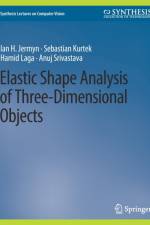av Ian H. Jermyn
625,-
Statistical analysis of shapes of 3D objects is an important problem with a wide range of applications. This analysis is difficult for many reasons, including the fact that objects differ in both geometry and topology. In this manuscript, we narrow the problem by focusing on objects with fixed topology, say objects that are diffeomorphic to unit spheres, and develop tools for analyzing their geometries. The main challenges in this problem are to register points across objects and to perform analysis while being invariant to certain shape-preserving transformations. We develop a comprehensive framework for analyzing shapes of spherical objects, i.e., objects that are embeddings of a unit sphere in #x211D;, including tools for: quantifying shape differences, optimally deforming shapes into each other, summarizing shape samples, extracting principal modes of shape variability, and modeling shape variability associated with populations. An important strength of this framework is that it is elastic: it performs alignment, registration, and comparison in a single unified framework, while being invariant to shape-preserving transformations. The approach is essentially Riemannian in the following sense. We specify natural mathematical representations of surfaces of interest, and impose Riemannian metrics that are invariant to the actions of the shape-preserving transformations. In particular, they are invariant to reparameterizations of surfaces. While these metrics are too complicated to allow broad usage in practical applications, we introduce a novel representation, termed square-root normal fields (SRNFs), that transform a particular invariant elastic metric into the standard L metric. As a result, one can use standard techniques from functional data analysis for registering, comparing, and summarizing shapes. Specifically, this results in: pairwise registration of surfaces; computation of geodesic paths encoding optimal deformations; computation of Karcher means and covariances under the shape metric; tangent Principal Component Analysis (PCA) and extraction of dominant modes of variability; and finally, modeling of shape variability using wrapped normal densities. These ideas are demonstrated using two case studies: the analysis of surfaces denoting human bodies in terms of shape and pose variability; and the clustering and classification of the shapes of subcortical brain structures for use in medical diagnosis. This book develops these ideas without assuming advanced knowledge in differential geometry and statistics. We summarize some basic tools from differential geometry in the appendices, and introduce additional concepts and terminology as needed in the individual chapters.

